-
Car Reviews
- Car News
-
Car Comparisons
Latest comparisons
- Chasing Deals
Qashqai hybrid is a great drive but there’s little reason to spend mid-size SUV money on this small, top-spec N-Design
The new-look Nissan Qashqai arrived in Australia in February with the Japanese carmaker answering the public’s calls for more hybrid trims. Hallelujah!
Even better, Nissan’s refreshed, sweet driving SUV arrived without a price increase, despite also collecting connected services along with cheaper servicing and a conditional 10-year warranty.
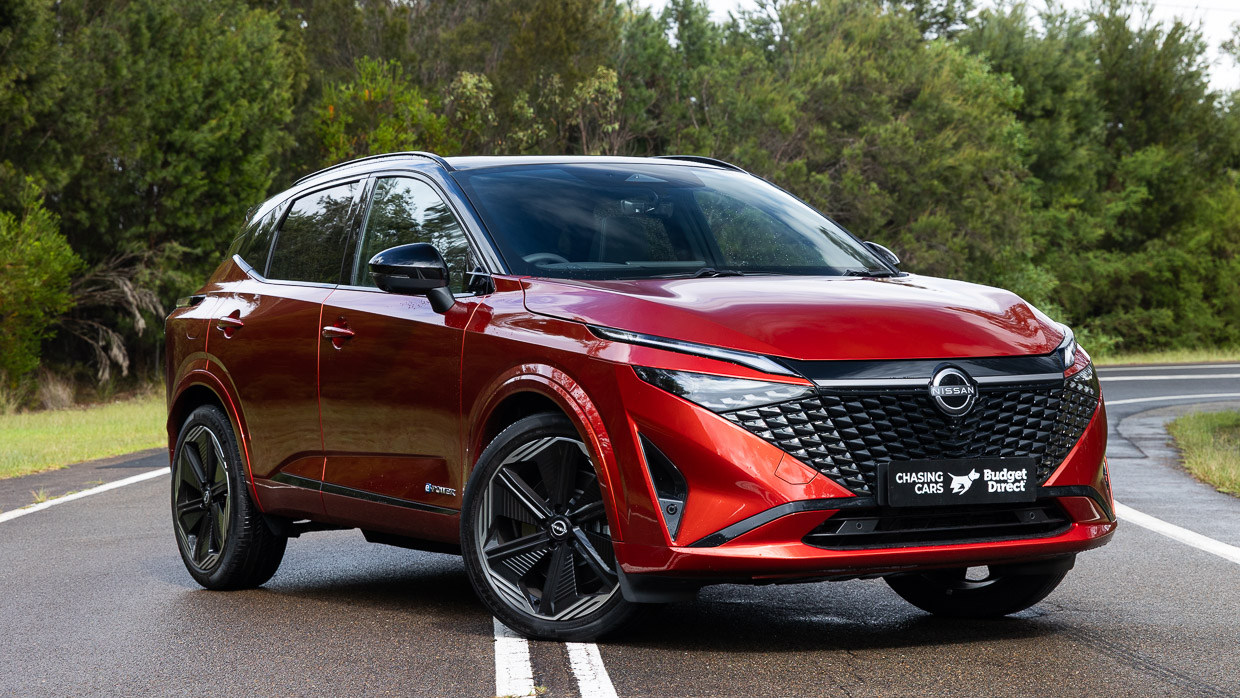
Except, it’s not quite that simple. We were begging for the serene Qashqai E-Power hybrid range to expand lower down the tree with the ST and ST-L trims. Instead, Nissan put a new trim at the top of the tree, the N-Design you see here.
It amplifies the design changes, including a huge new front grille with ‘comma’ details — reflected in the head and new smoked tail lights — along with two-tone diamond-cut 20-inch alloy wheels.
The problem is that the N-Design isn’t cheap, at $54,365 before on-road costs, and our two-tone example finished in sexy Fuji Sunset Red clocks in at over $60K on the road.
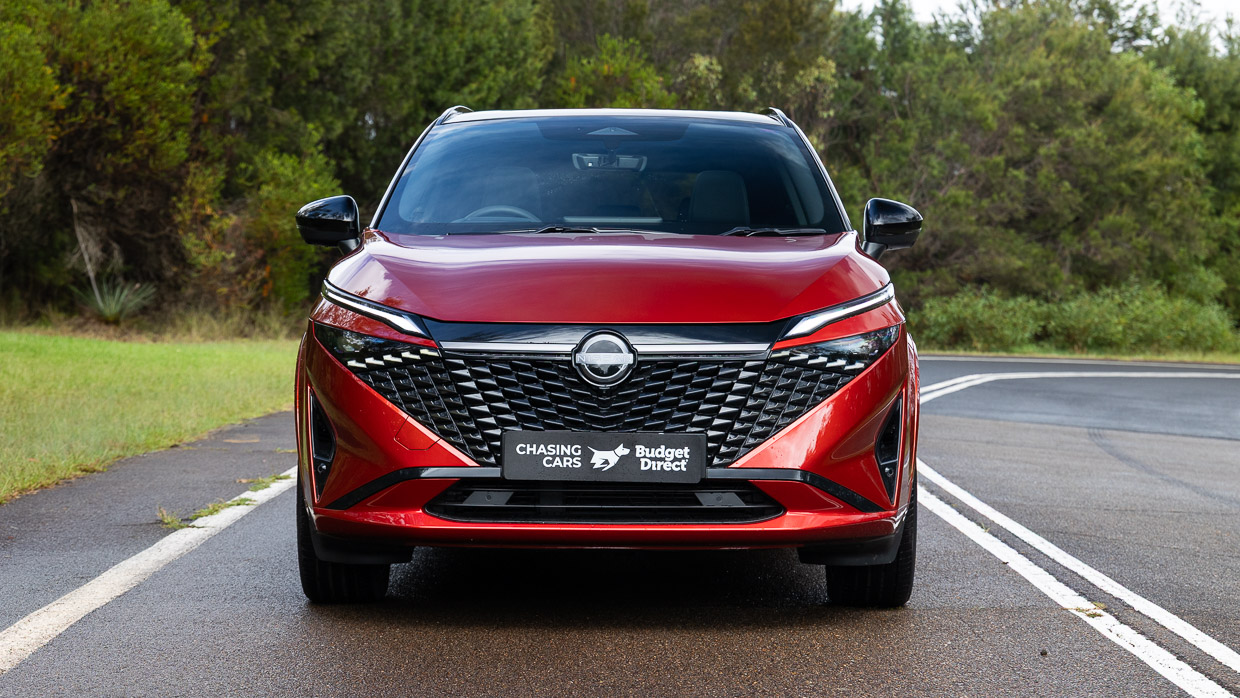
And yes, you’re right, that buys you plenty of metal in the size class above this small SUV, including a Toyota RAV4 Cruiser with all-wheel drive, and even a better-equipped Nissan X-Trail E-Power with power sent to four wheels is only a smidge dearer.
That might all be forgivable if Nissan had taken the N-Design to the nines. Think quilted leather-accented upholstery, 10-speaker Bose sound system, power-adjust and lumbar for both front seats, clever cargo divider system and massaging seats.
But, well, you get all that stuff on the $2000 cheaper Ti-L E-Power hybrid! Yeah, that doesn’t make sense to us, either. At least you get body-colour trims, black roof rails and mirror caps for the N-Design’s extra ask.
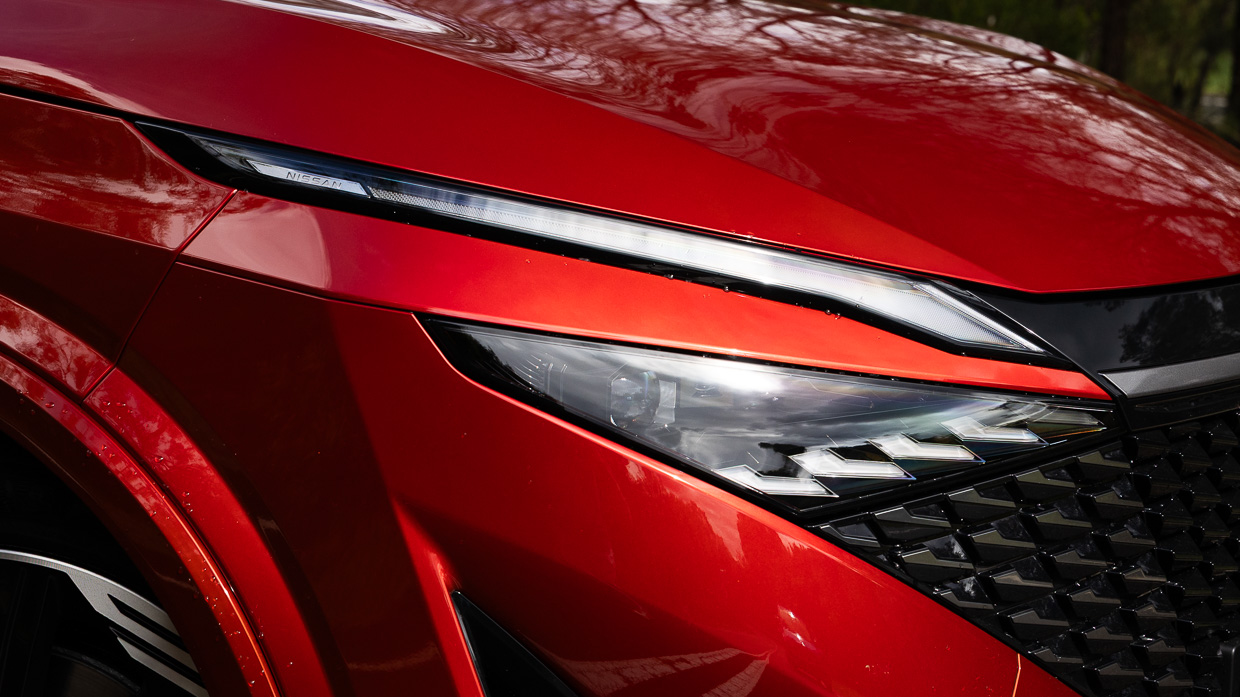
The Qashqai N-Design hybrid’s list of equipment includes:
The Qashqai does offer more real estate than some other small SUVs, measuring 4425mm long and 1835mm wide.
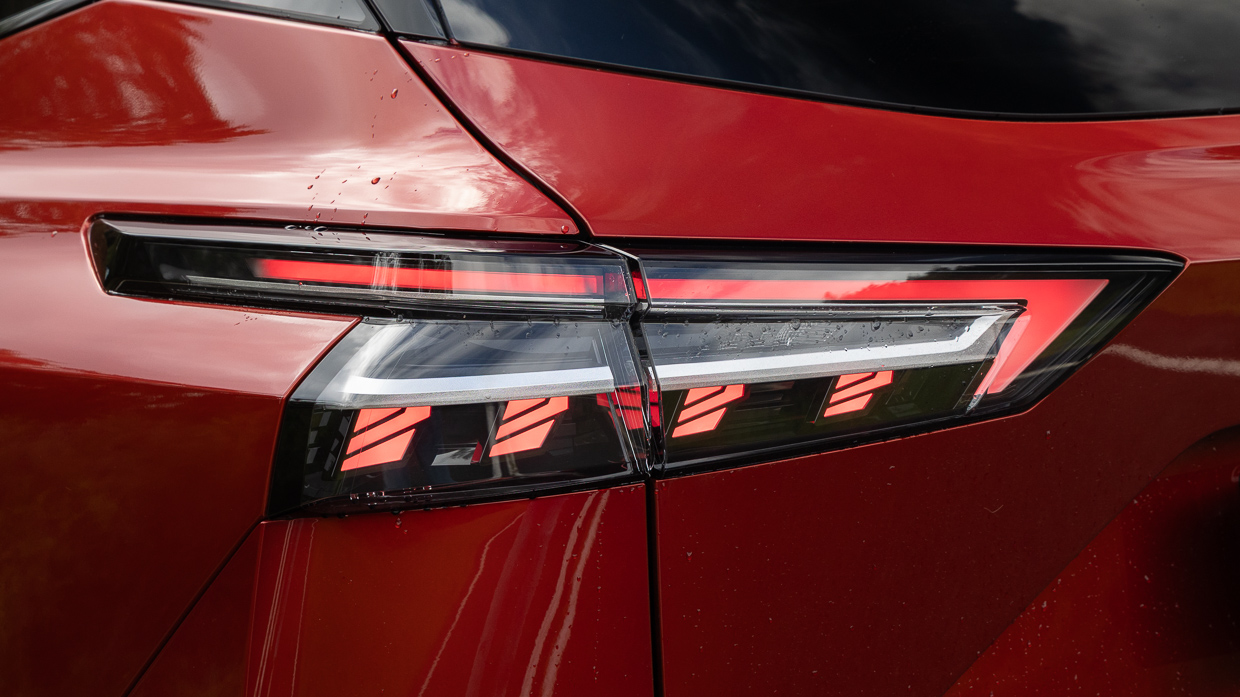
See the below list of top-spec hybrid rivals for pricing context.
One of the Qashqai’s big specification boasts in the small SUV segment is multi-link rear suspension across the range, and dynamics polished to suit fast-driving Brits. After all, this small SUV model is built in Sunderland — it’s more English than Japanese.
With a direct, well-weighted electric power-assisted steering rack, the Qashqai inspires immediate confidence. That sophisticated rear suspension means fluid handling and superb road-holding for a small SUV. The Qashqai is rarely fun to punt down a twisty road with ample attitude adjustment via the brake and throttle.
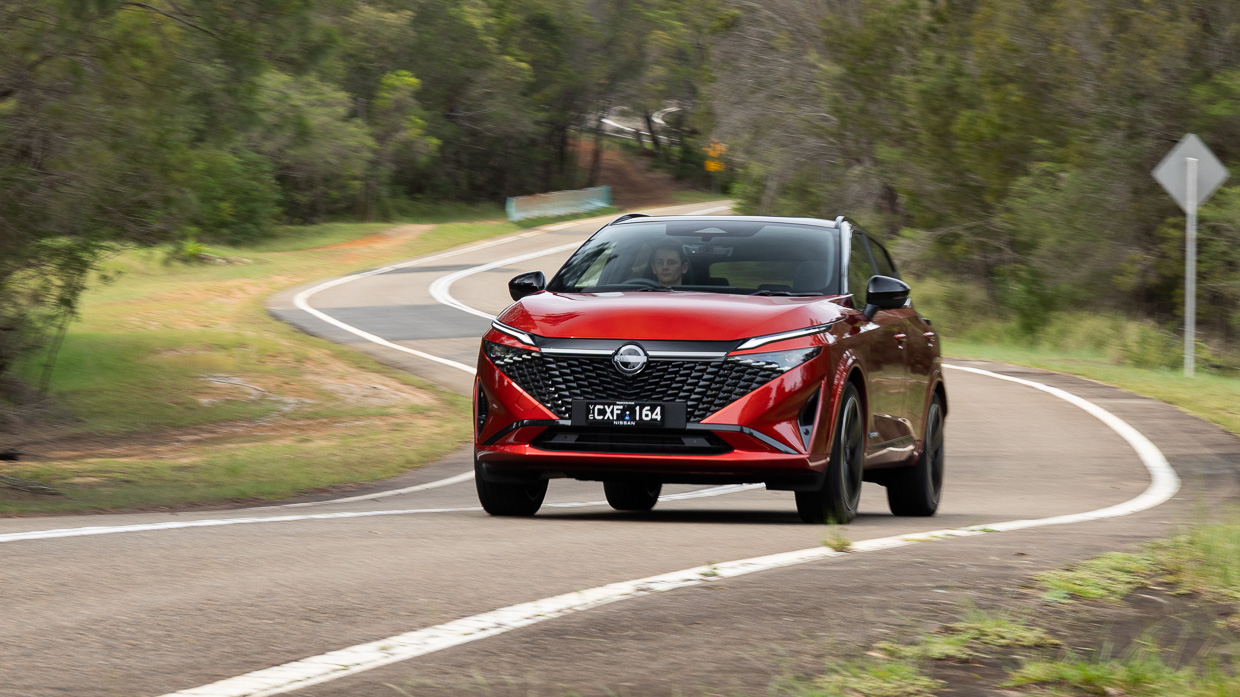
Previous testing of the has shown the Qashqai is an absolute demon in a swerve-and-avoid manoeuvre and that it out-brakes rivals.
It’s a shame, then, that low-speed ride quality has come at the cost of handling — especially on the N-Design’s heavy 20-inch alloys that transmit the sharp-edged speed humps and concrete expansion joints that litter Sydney’s roads into the cabin. At least the quality 235/45R20 Michelin Primacy 4 tyres are nice and quiet on the motorway.
The E-Power drivetrain and its calibration are superb, with EV-like crisp accelerator response. Despite a 206kg weight penalty over the petrol, the 1732kg Qashqai hybrid is still lively enough — expect the E-Power to sprint from 0-100km/h in about 8.0 seconds.
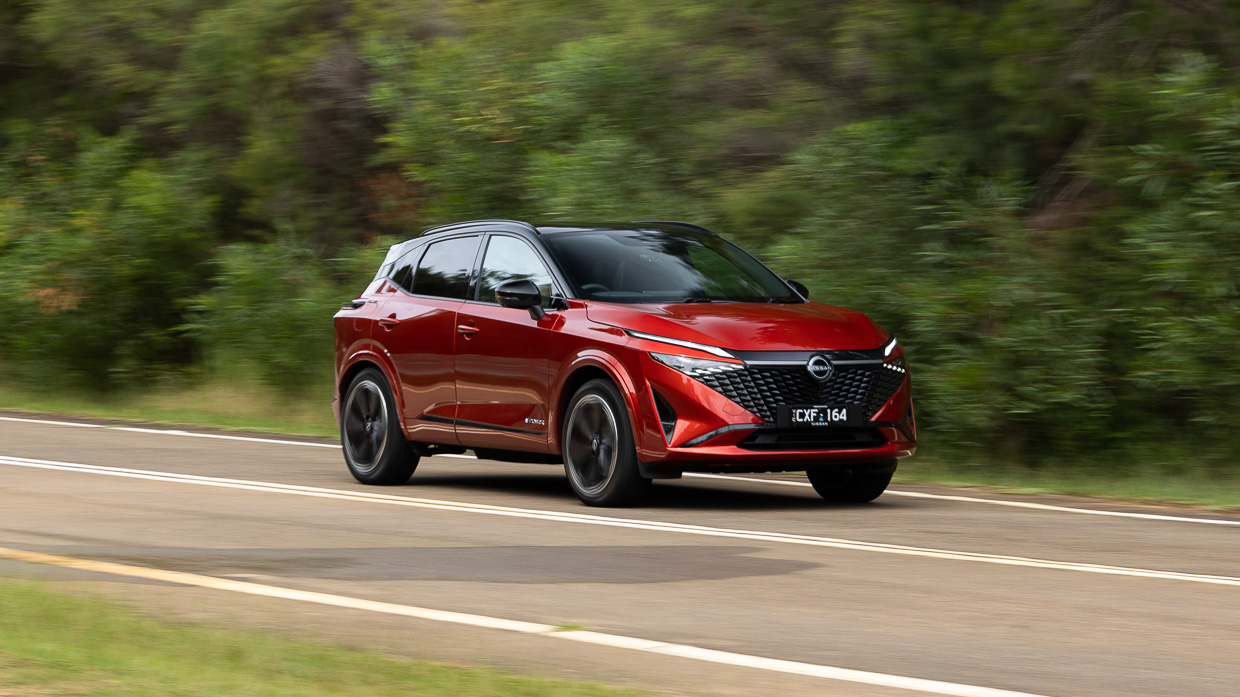
Front-wheel drive is fine for this level of punch, but it’s a shame AWD isn’t offered as similarly priced X-Trails are all-paw.
The Qashqai’s 140kW/330Nm electric motor turns the front wheels exclusively via a single-speed reduction gear, with a turbo-petrol 1.5-litre three-cylinder acting as a generator to provide electrons straight to the motor via an inverter, or be stored in a small battery for short bursts of electric-only driving.
This means the Qashqai has quite effective regenerative braking, though the e-Pedal mode is a little clumsy and doesn’t bring the car to a full stop.
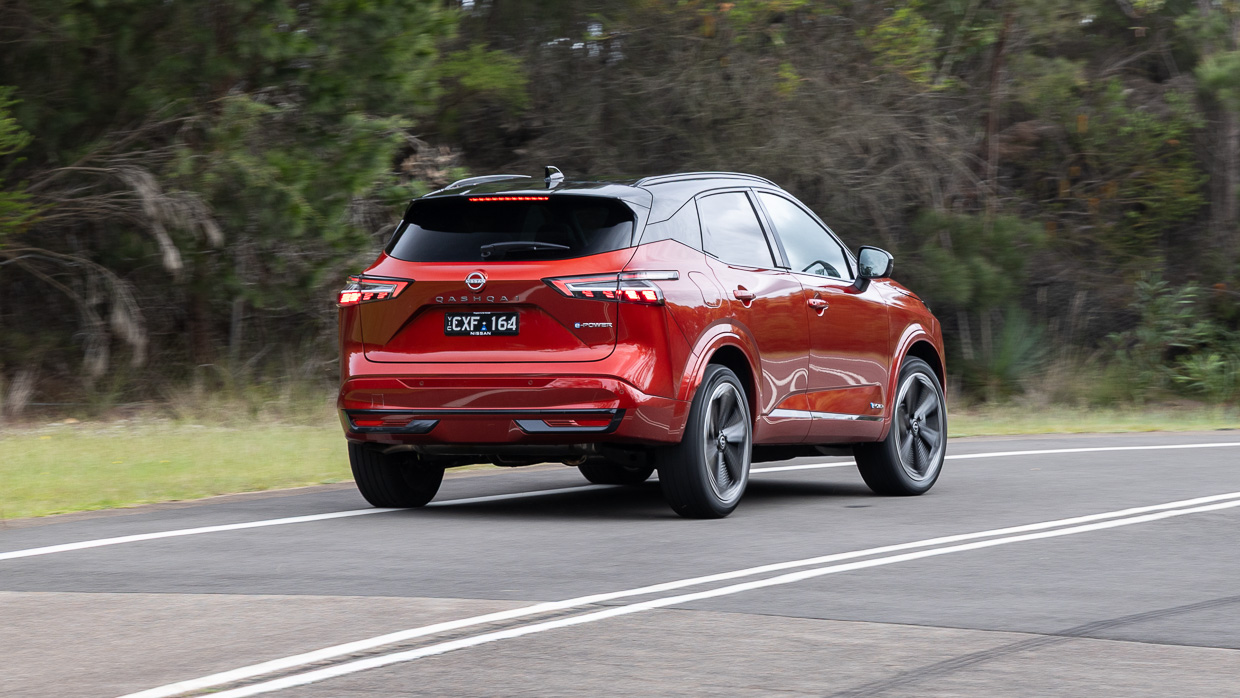
At least there’s none of the lumpiness experienced from some newer, cheaper-to-buy hybrids.
When the second-generation Qashqai arrived in Australia, its upmarket cabin marked a serious upgrade for the nameplate, breaking free of dull and cheap-feeling small SUVs.
Partially, the Qashqai’s cabin feels less special because new rivals from China have democratised what we know as ‘luxury’ (soft-touch surfaces, exposed stitching, etcetera) but more importantly, the attention-to-detail seen on our N-Design was way below par.
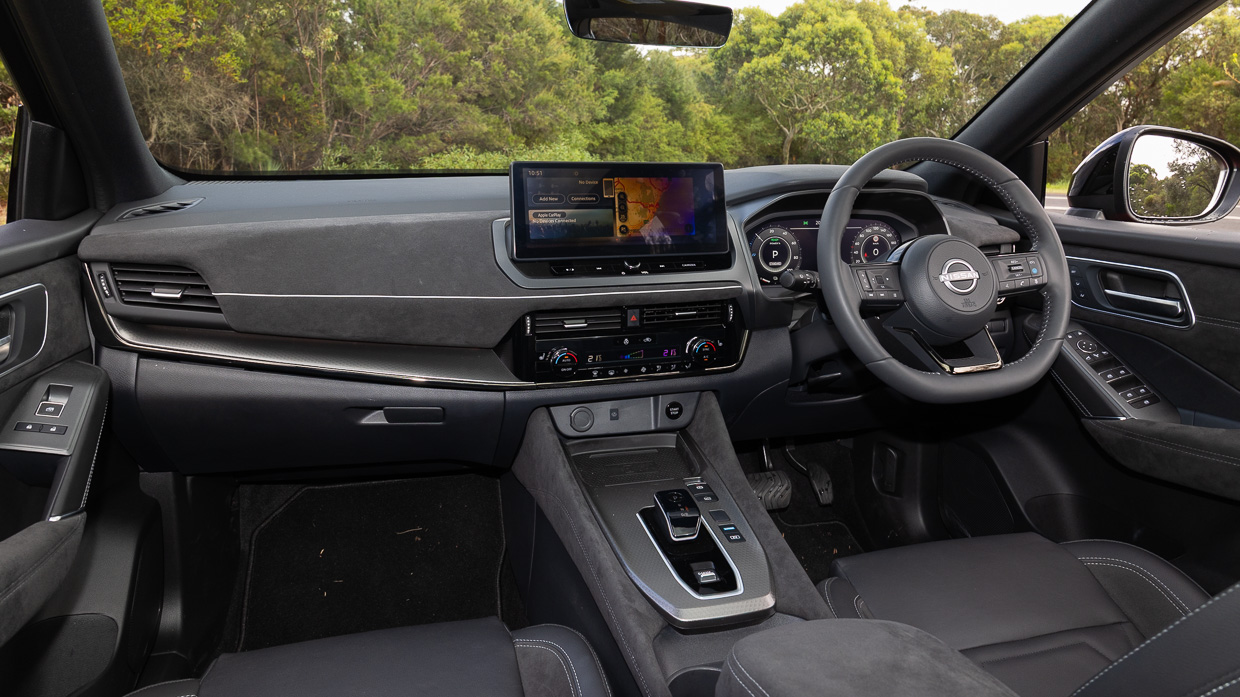
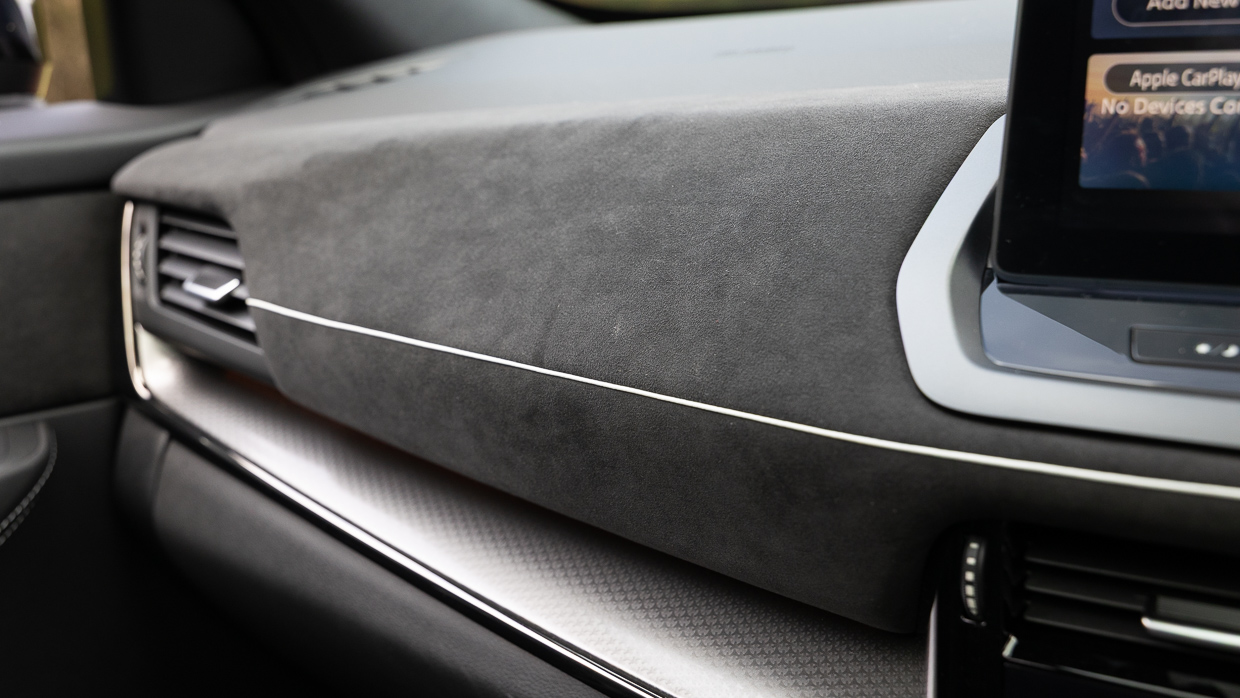
From wonkily-stitched leather on unevenly shaped seats to creaky cabin plastics and scratchy boot carpet that’s mounted onto cheap chipboard with what appears to be a glue stick, this example, at least, appears to have slipped through the quality control cracks.
It is doubly a shame, because the Qashqai otherwise has a solid technology package, decent practicalities, and a bit of design flair.
The 12.3-inch digital driver’s display, for example, is fully featured with the ability to show a map. A bright head-up display helps with turn-by-turn directions and speed information.
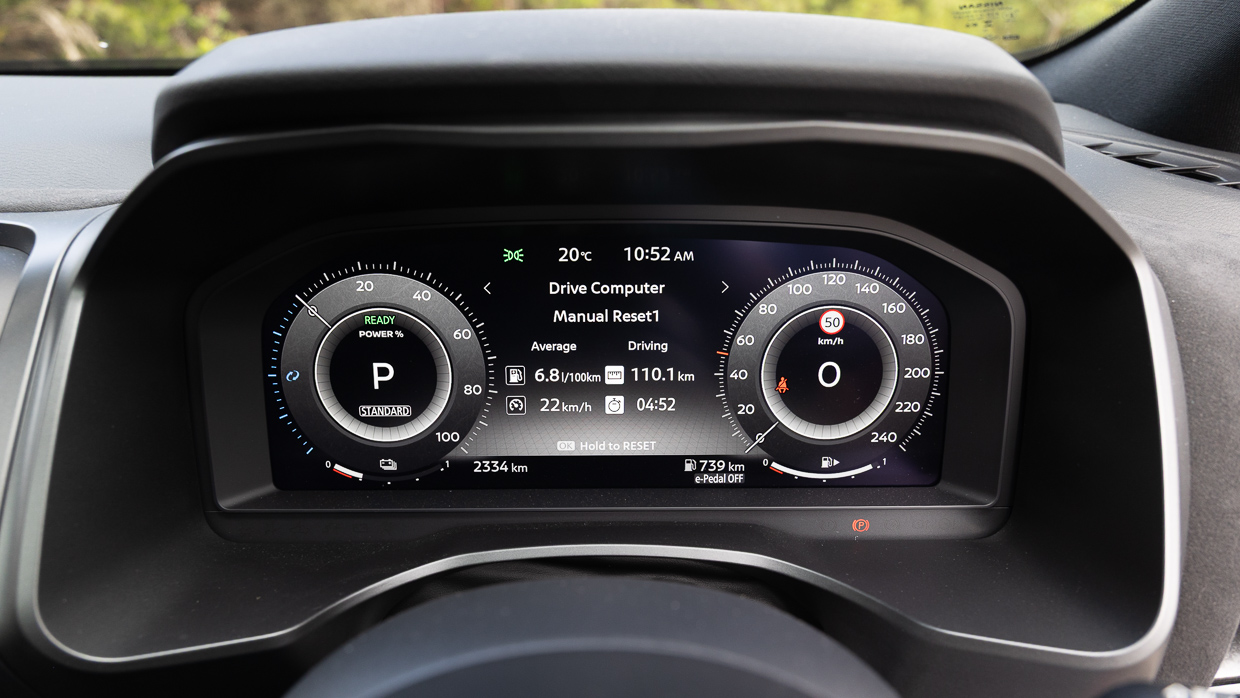
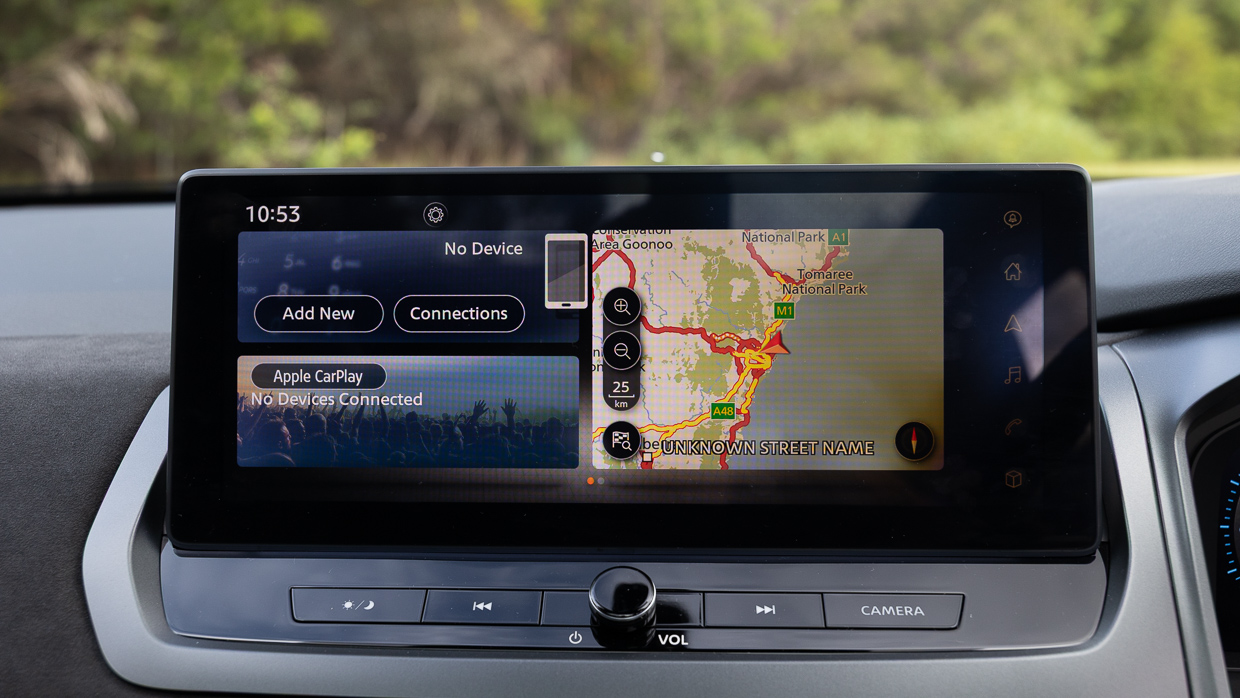
In the centre, an equal-sized touchscreen faultlessly runs Apple CarPlay and Android Auto wirelessly, with a wireless charging pad (or USB-C port) for topping up batteries. We wish the Bose sound system made it into the N-Design as the in-house six-speaker system lacks moxy.
Strangely, the Qashqai’s centre widescreen doesn’t actually do much. Key adjustments for safety assistance, screen brightness, etcetera, are gathered in the driver’s binnacle.
The new N-Design stands out with genuine Alcantara lining the top of the dash, door inserts, plush armrests and well-placed knee pads. All are accented with contrasting white stitching.
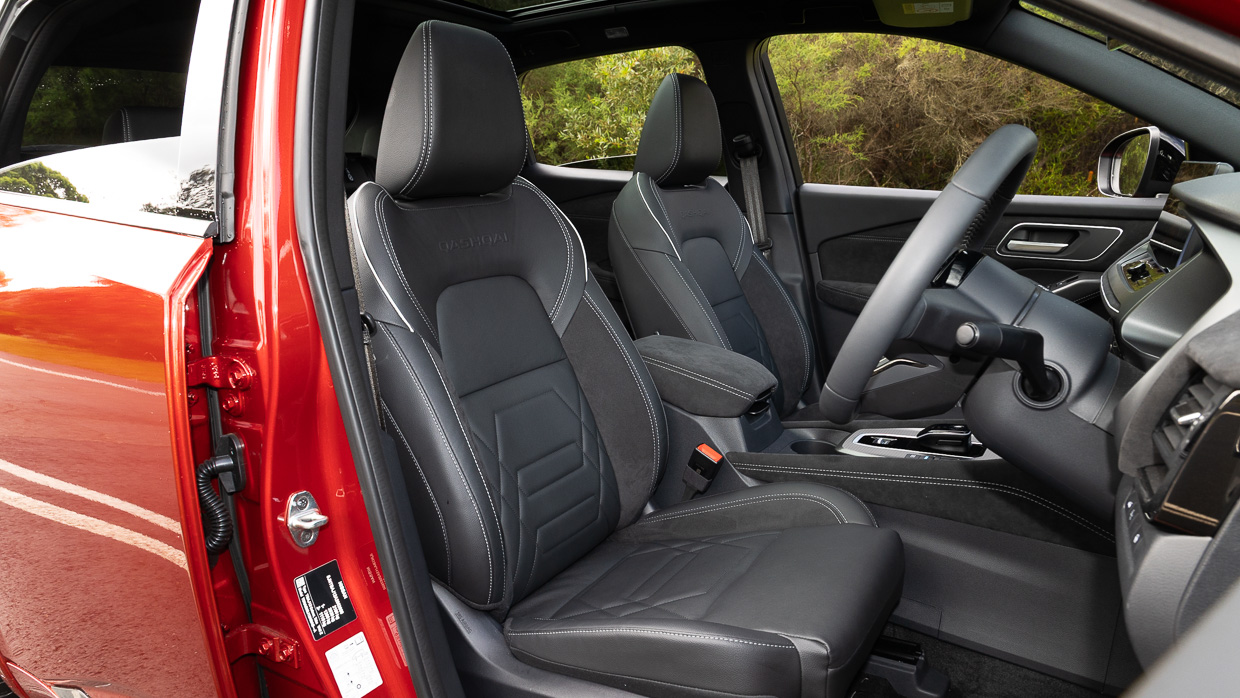
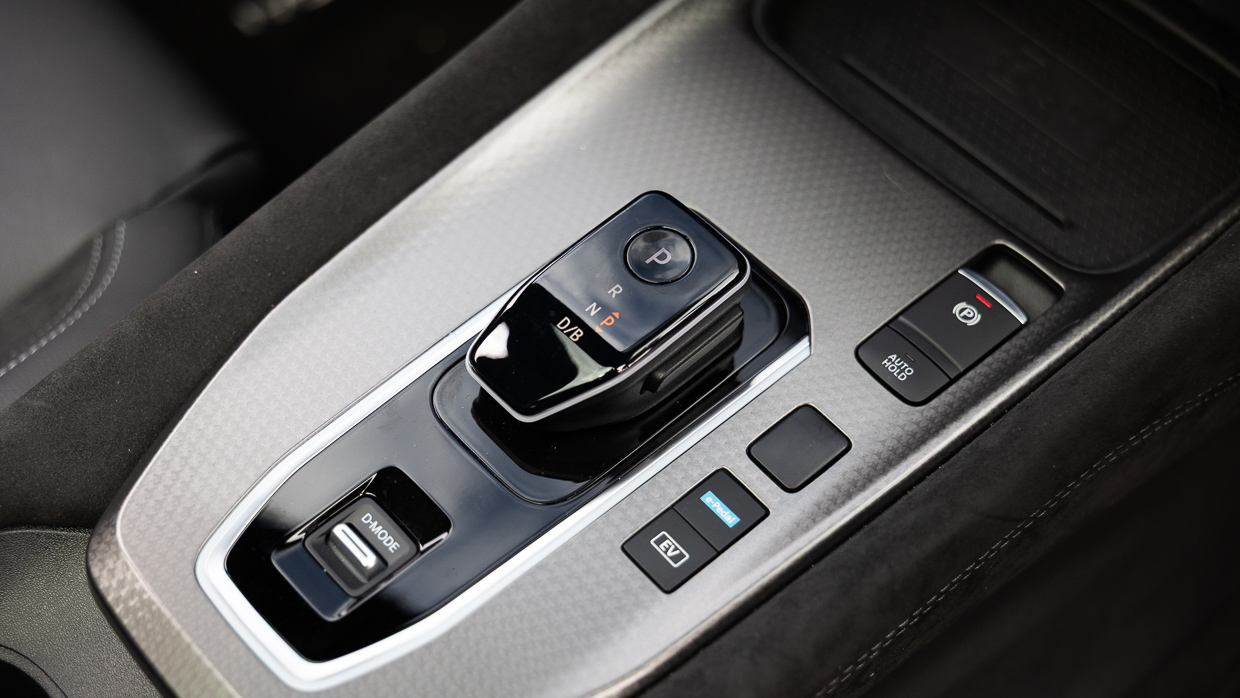
The six-way power-adjust driver’s seat is comfortable with sufficient side bolstering and power lumbar, but there’s no under-thigh tilt adjust or memory and the front passenger slums it with manual movements.
Although the front rows pews are heated, there’s no ventilation function which is a shame given the asking price and inclusion of a panoramic roof to let in the hot Australian sun.
Two cup holders, a covered centre storage bin and door pockets big enough for a 600-millilitre water bottle round out the cabin practicalities, if with no clever mezzanine below the shifter like you’d find in a bigger (and the similarly priced) X-Trail.
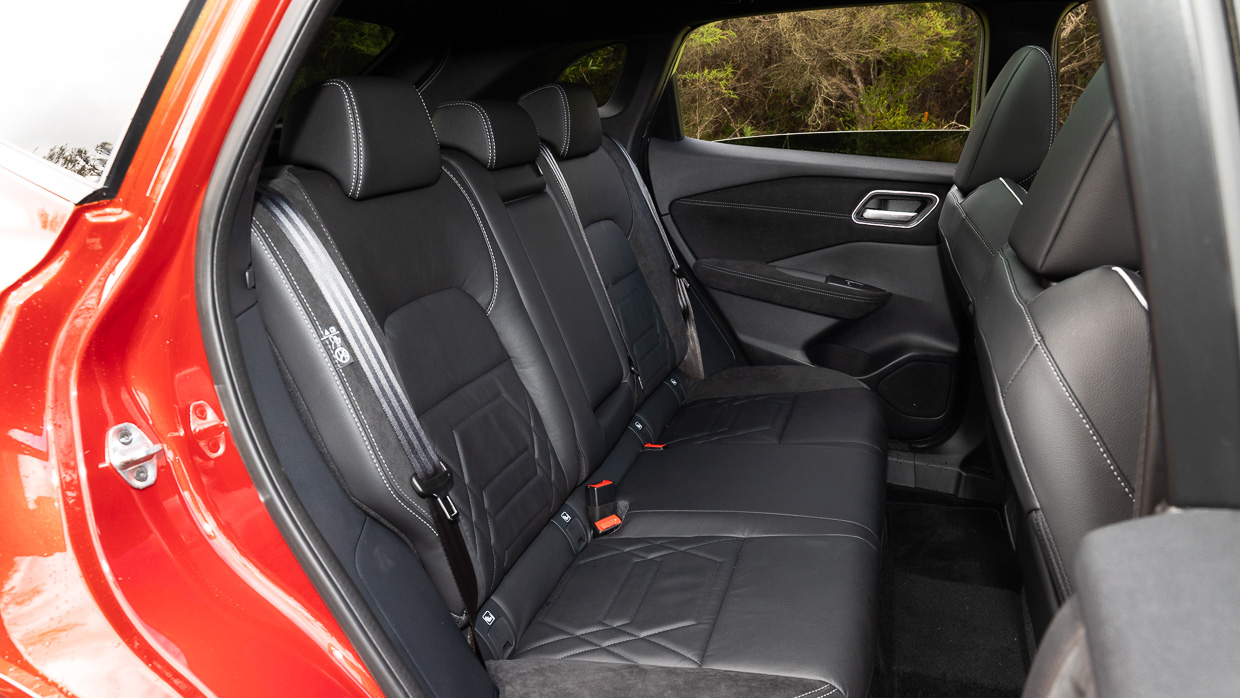
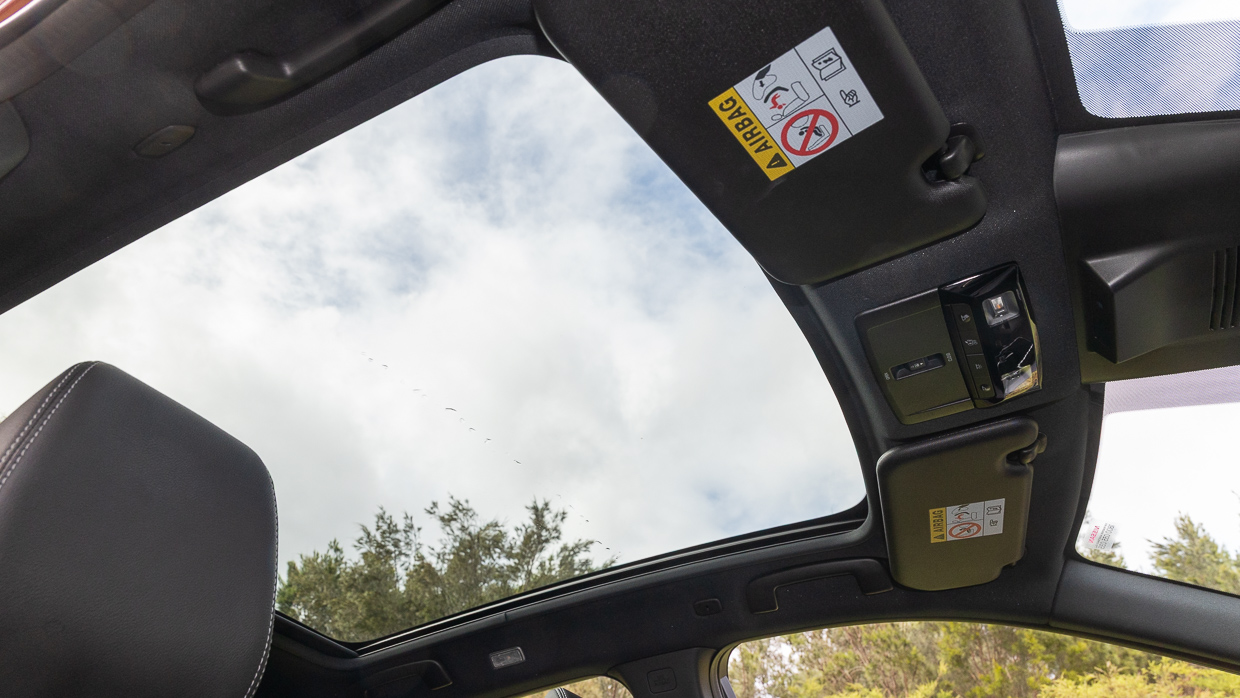
For 2025, the Nissan Qashqai gains connected services. While this isn’t a digital key like you’d see in a Tesla Model 3, the Qashqai allows owners to monitor key health, trip history and vehicle disturbances.
Compared to small SUV rivals, the Qashqai’s rear seat is spacious and, with the sunroof, feels airy and light. It isn’t perfect, however, with limited toe room under the seats and hard door tops. There’s no clever packaging solutions like sliding benches or adjustable backrests, either.
The Nissan Qashqai has Isofix tethers for outboard seats and top tether anchors for all three second row positions. Two USB-C charge points, conventional map pockets, a fold-down armrest and adjustable vents complete the Qashqai N-Design’s back seat.
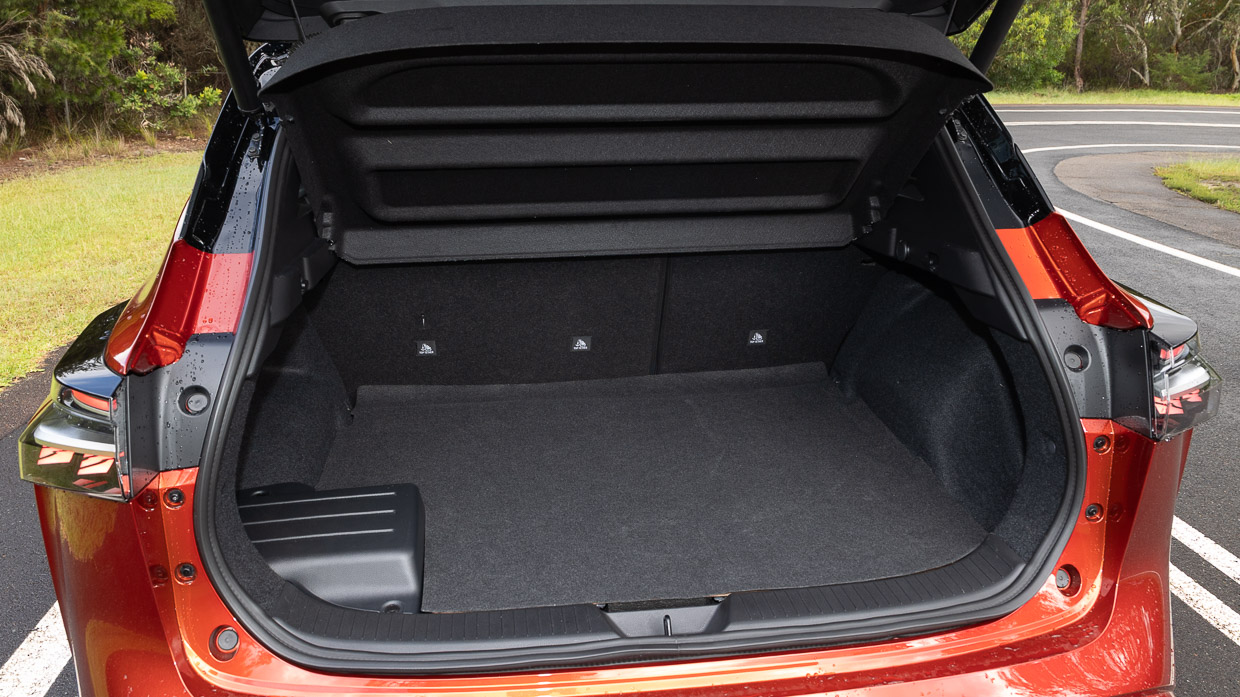
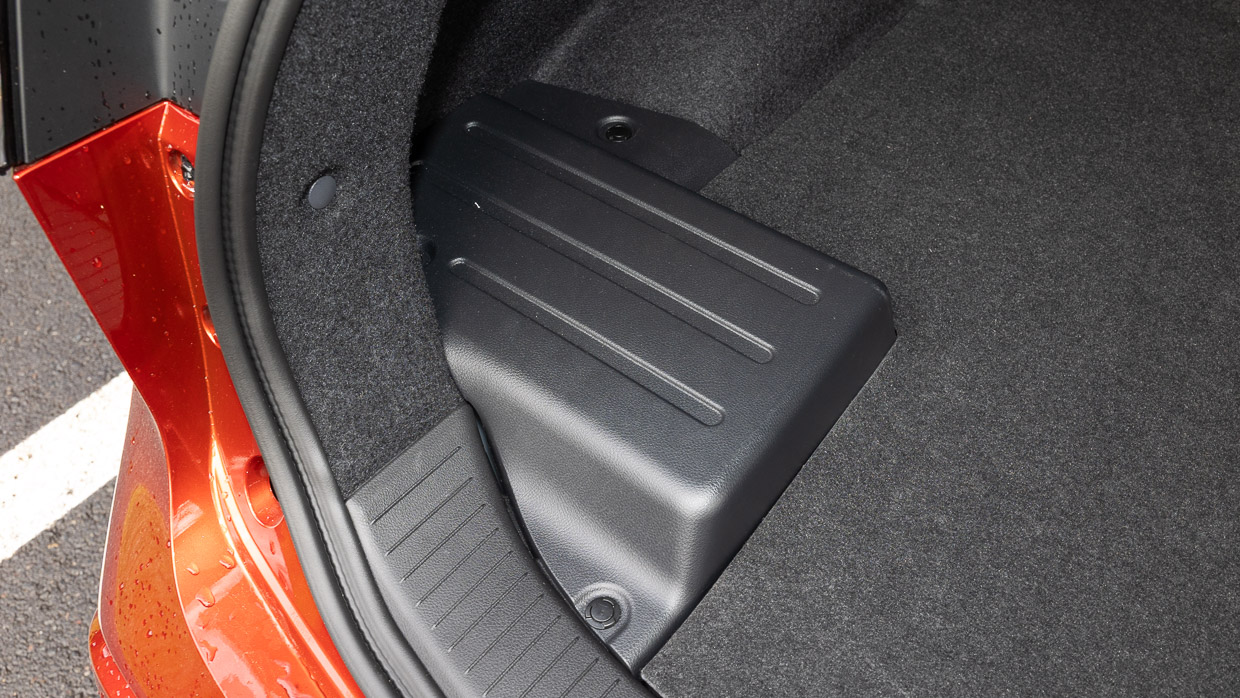
Following up the back seat, the Qashqai’s bootspace is a letdown, measuring only 404 litres in top-spec N-Design trim — even the Ti-L (452L) offers more. There’s a plastic protrusion covering the Qashqai’s 12-volt battery that hurts usability further.
The N-Design also misses out on the Ti-L’s clever shopping management system with pull-up boards in the boot.
It still features a 12-volt socket, shopping bag hooks, and reliable kick-to-open power tailgate.
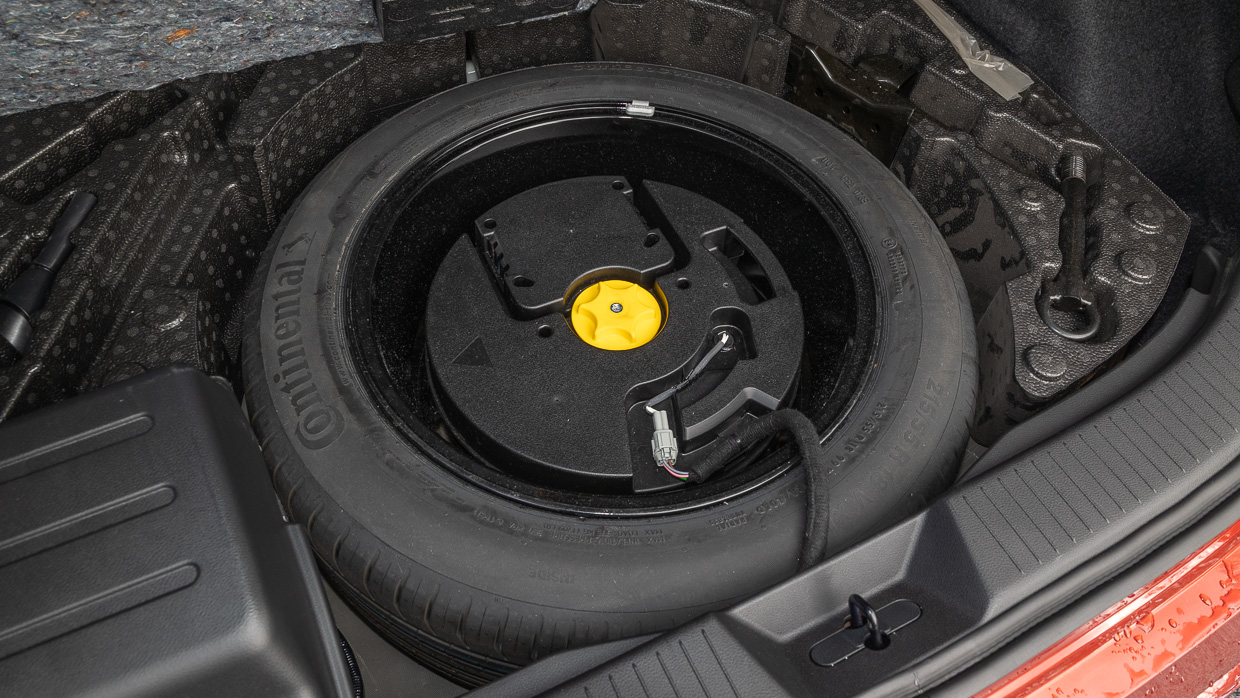
Given the Qashqai has battery gubbins and multi-link rear suspension to package, it’s impressive Nissan has managed to fit a nearly-full-size 18-inch spare wheel and tyre under the boot floor.
The Nissan Qashqai features seven airbags, including a front centre one, and a five-star ANCAP rating from 2021.
Showing the sophistication of mainstream carmakers, the Qashqai’s safety assistance systems are well-tuned, including the N-Design’s ProPilot lane-keep assist and adaptive cruise control program.
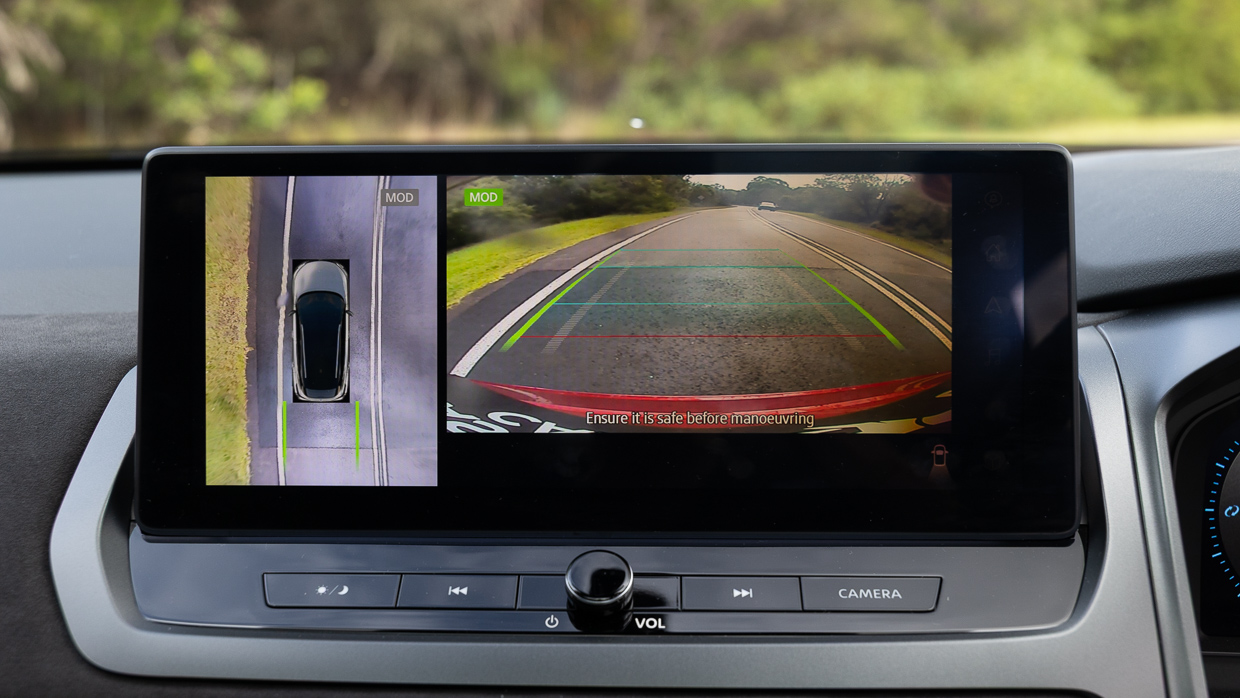
It is easy enough to disable the Qashqai’s lane-keep system if you wish (though it defaults to ‘on’ every time you start the car) and there are very few beeps and bongs while driving.
The Qashqai was awarded high scores for Adult Occupant Protection (91 percent), Child Occupant Protection (93 percent), and Safety Assist (97 percent) with Vulnerable Road User Protection given 74 percent.
The Nissan Qashqai features the following list of safety features:
Nissan has been busy improving ownership prospects, and has dropped Qashqai service pricing to a capped $399 for the first five visits — about $1000 less over five years (now $1995) than the petrol at launch.
Currently, Nissan is running an offer for three years of free servicing for new Qashqai E-Power buyers, helping the equation further.
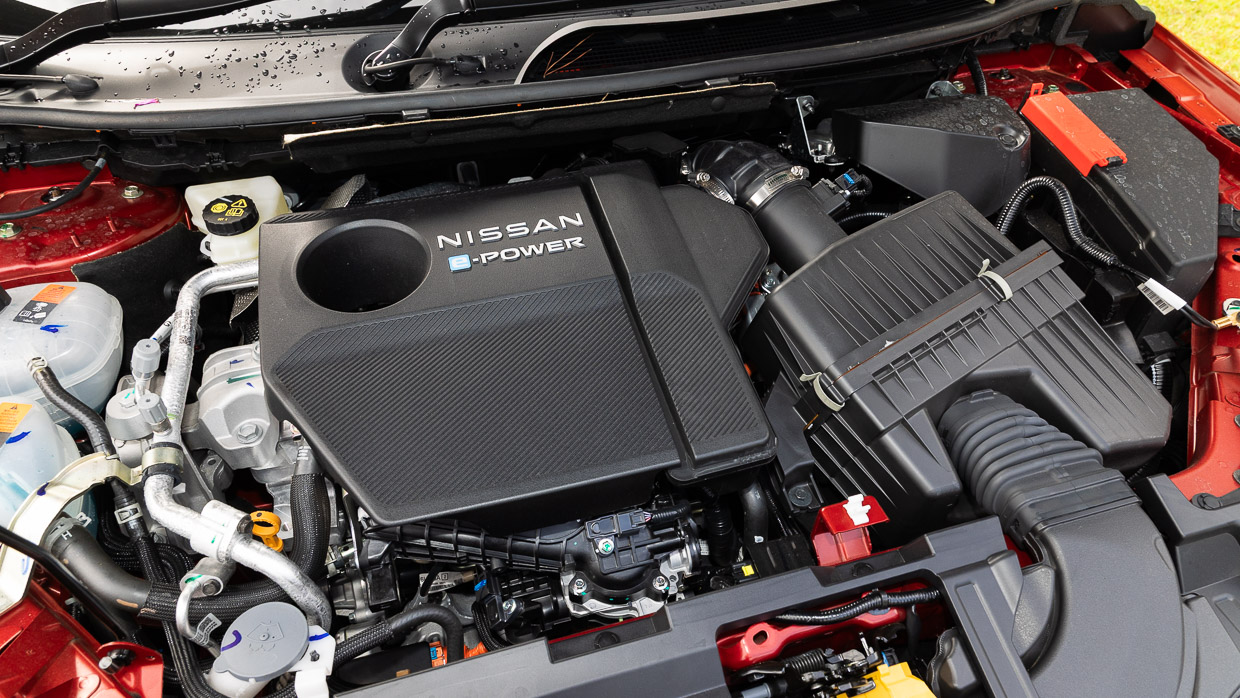
The Qashqai also benefits from Nissan’s new 10-year, 300,000km warranty, providing, that is, you keep it maintained at a Nissan dealership. That said, the hybrid is a little needy, requiring a visit to the mechanics once every 12 months or 10,000km, rather than the petrol’s 15,000km.
We’ve found Nissan’s E-Power hybrid system to provide more variable fuel consumption than its Toyota rivals in the past, and this Qashqai continues that trend.
Against a 4.8L/100km NEDC rating (with 112g/km of CO2), we returned 5.5L/100km in combined driving, according to the Qashqai’s trip computer. The Qashqai E-Power is also quite thirsty around town, with consumption over 6.0L/100km.
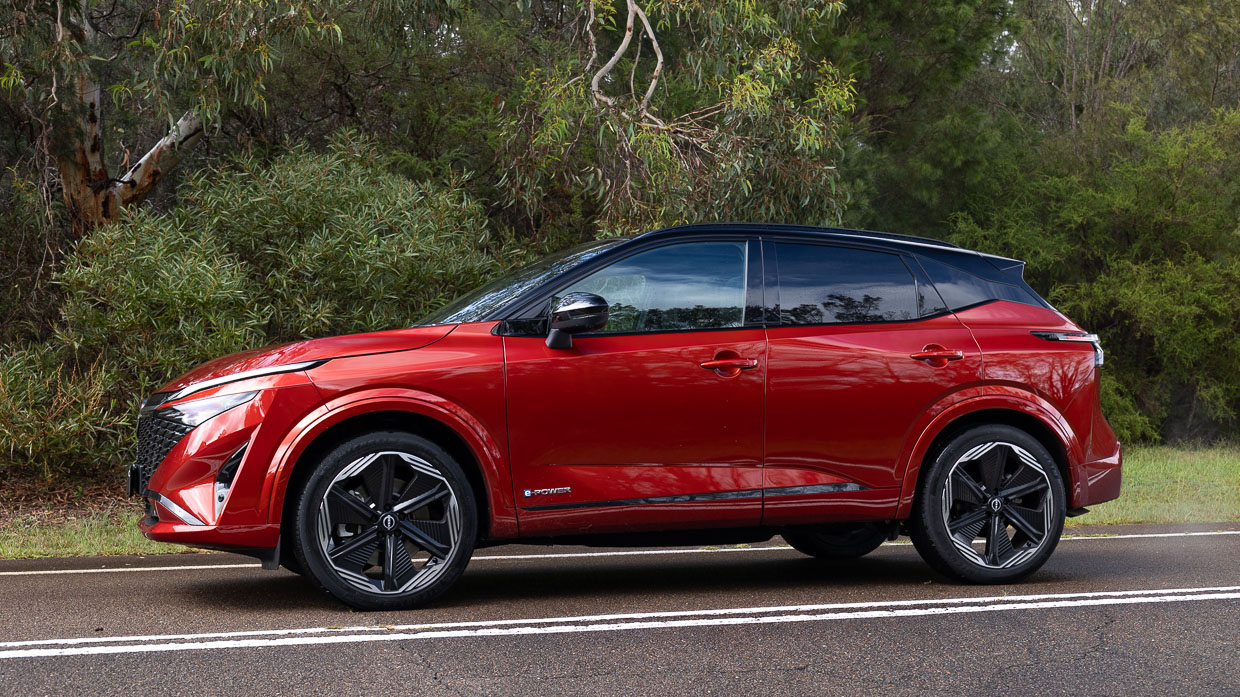
With 55 litres of 95RON unleaded onboard, the Qashqai’s real-world driving suburban range is still impressive; expect between 900-1000km.
Rarely does one variant sit so out of sorts with the rest of a model range, especially at the top of the tree. But after spending a week with the Qashqai N-Design hybrid, we couldn’t square the premium over the better equipped Ti-L E-Power.
Importantly, the road test score of the N-Design does not reflect the rest of the Qashqai range. The small SUV is a delight for keener drivers and, in lower-grade ST-L, has a deeply sophisticated ride with its smaller alloy wheels and more sidewall squish.
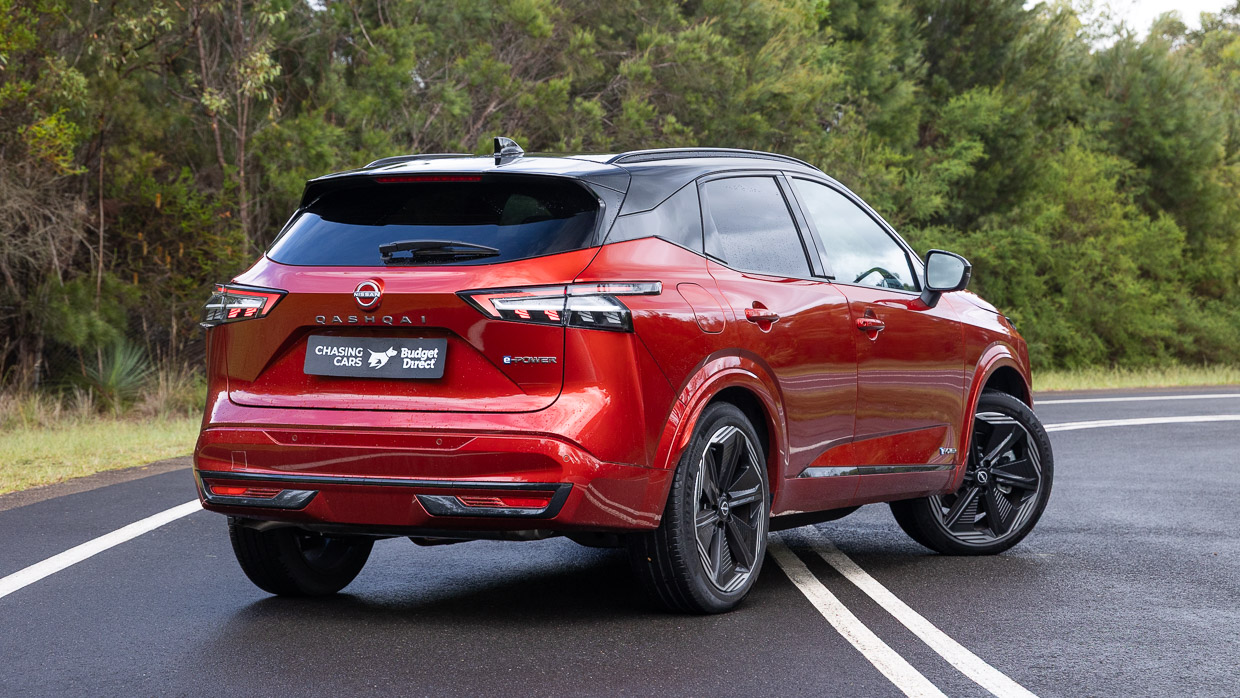
All the more perplexing is that Nissan decided to omit the slick hybrid system from the most sensible trims with the facelift. If Nissan offered $45K driveaway ST-L and sub $50K Ti hybrid trims, we’d easily recommend the new Qashqai.
It’s a shame, and at the price you’re paying for the top-spec N-Design, the poor build quality and average packaging become even less excusable. If you want to spend this much on a hybrid Nissan, the better-packaged, AWD X-Trail is a no-brainer.
Key specs (as tested)
About Chasing cars
Chasing Cars reviews are 100% independent.
Because we are powered by Budget Direct Insurance, we don’t receive advertising or sales revenue from car manufacturers.
We’re truly independent – giving you Australia’s best car reviews.
The estimate provided does not take into account your personal circumstances but is intended to give a general indication of the cost of insurance, in order to obtain a complete quote, please visit www.budgetdirect.com.au. Estimate includes 15%^ online discount.
^Conditions Apply
Budget Direct Insurance arranged by Auto & General Services Pty Ltd ACN 003 617 909(AGS) AFSL 241 411, for and on behalf of the insurer, Auto & General Insurance Company Limited(ABN 42 111 586 353, AFSL 285 571).Because we don’t know your financial needs, we can’t advise you if this insurance will suit you. You should consider your needs and the Product Disclosure Statement before making a decision to buy insurance. Terms and conditions apply.
Indicative quote based on assumptions including postcode , 40 year old male with no offences, licence suspensions or claims in the last 5 years, a NCD Rating 1 and no younger drivers listed. White car, driven up to 10,000kms a year, unfinanced, with no modifications, factory options and/or non-standard accessories, private use only and garaged at night.
^Online Discounts Terms & Conditions
1. Discounts apply to the premium paid for a new Budget Direct Gold Comprehensive Car Insurance, Third Party Property Only or Third Party Property, Fire & Theft Insurance policy initiated online on or after 29 March 2017. Discounts do not apply to optional Roadside Assistance.
2. Discounts do not apply to any renewal offer of insurance.
3. Discounts only apply to the insurance portion of the premium. Discounts are applied before government charges, taxes, levies and fees, including instalment processing fees (as applicable). The full extent of discounts may therefore be impacted.
4. We reserve the right to change the offer without notice.